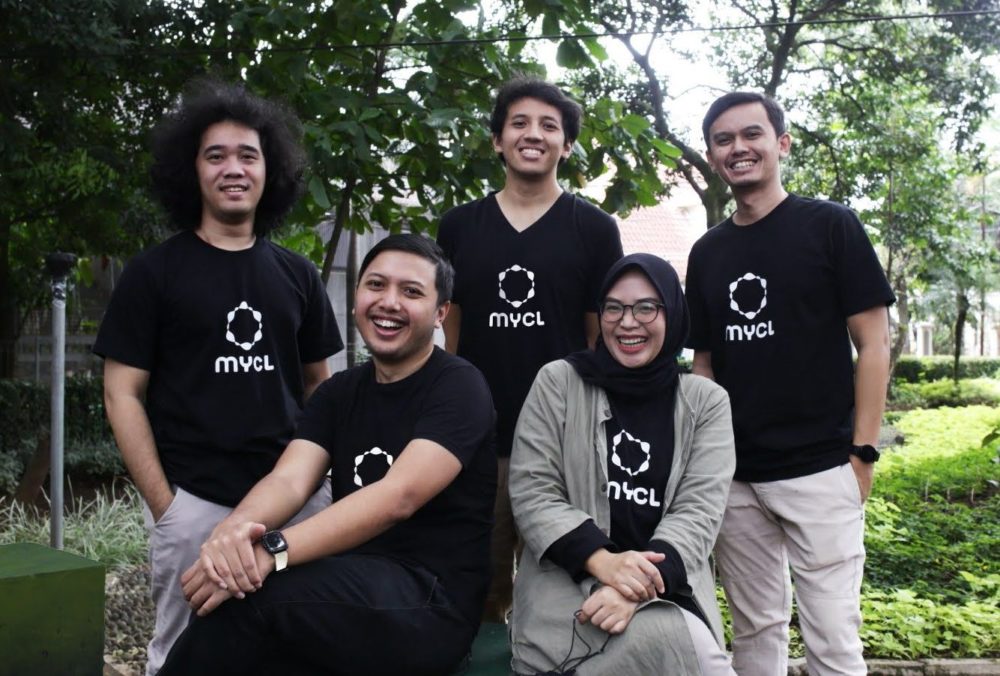Disclosure: The GROW Impact Accelerator is backed by AgFunder, AFN’s parent company.
The production of clothes, footwear, and household textiles is a major source of greenhouse gas emissions and water pollution. Around 10% of total global emissions come from making clothing and footwear production; while around 35% of all microplastics present in the oceans are thought to come from clothing, according to the EU.
Digging down, the leather industry is among the worst offenders – touching on the negative environmental impacts of cattle farming, including deforestation and methane emissions, along with heavy usage and runoff of harmful chemicals.
Inspired by the local soy-based delicacy tempeh, Indonesian startup Mycotech Lab (MYCL) has created an alternative to conventional fibers called Mylea. This durable, regenerative material is formed from interlacing mycelia — the vegetative ‘roots’ of mushrooms — and can be used in textiles, construction, and as a replacement for animal-derived leather.
MYCL is participating in the latest cohort of the AgFunder-backed GROW Impact Accelerator. AFN chatted with co-founder and CEO Adi Reza Nugroho (ARN) to find out more about Mylea…
AFN: What problem is MYCL trying to solve, and how does your tech offer a solution?
ARN: The fashion industry is one of the biggest polluters, with over 20 billion tons of CO2 emissions per year. And 38% [of those] are coming from material production. So that’s why all the brands now are committed to reducing their emissions, by finding alternative, lower-carbon products.
Regarding the look, it is very similar to leather – in texture, look, feel, and then the performance; it’s already meeting some requirements. For example, abrasion resistance is already at 50,000 cycles, when it’s usually 10,000; and flex resistance is at 100,000 cycles. So when it comes to look, performance, and sustainability, Mylea checks all the boxes brands are looking for.
AFN: What have been some of the biggest challenges for MYCL so far? What have been some of the biggest successes?
ARN: In terms of competitiveness, we are pretty reliant on [scaling] our tech in order to make our materials become more affordable. If we are producing more and more, and become more efficient, we can compete even with synthetic leather, which is the most available and affordable product in this space right now.
In terms of the response from the market, that has been good. But the main challenge we face right now is how to scale the production [and] capital access: we are based in Southeast Asia, so it is quite difficult looking for capital for climate-related or sustainability-related innovation right now.
AFN: Do you have any numbers or case studies that demonstrate the impact of your tech?
ARN: Three things we have measured to high-level lifecycle assessment: potential reduced water consumption of 70%, global warming potential reductions of 68%, and reduced energy consumption of 17% [over leather.]
[So some of] the biggest polluters can now can save 70% of water consumption, 68% global warming, and 17% energy using our material compared with conventional leather tanneries.
AFN: What does ‘impact’ mean to you personally, and to MYCL as an organization? Why is social and environmental impact so important?
ARN: We call our business a social enterprise, an impact-driven company. So we try to do good, and do well: doing good means we are creating positive impact for the environment and society, but as same time doing well means we can still gain some profit and revenue.




